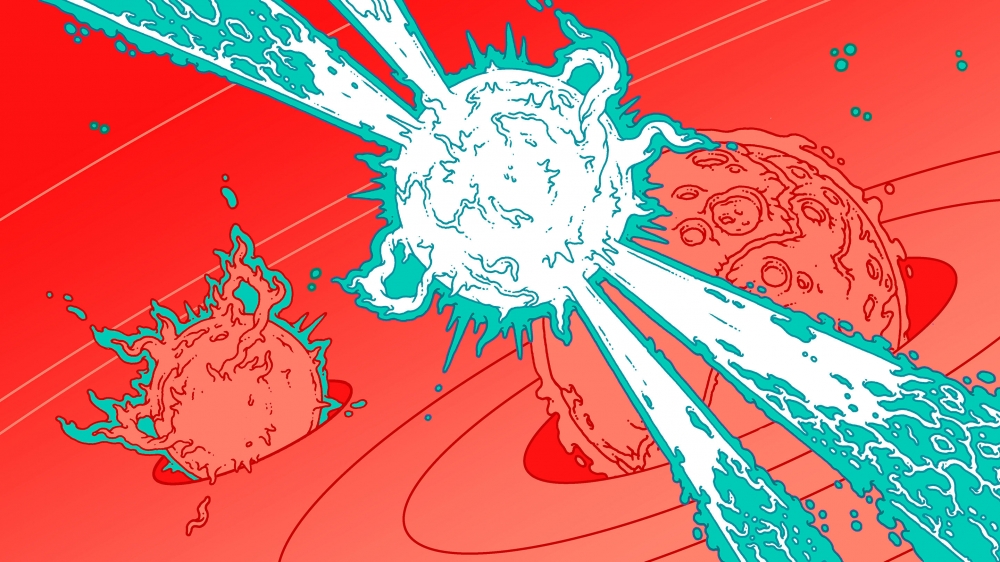Troubled Times for Alternatives to Einstein’s Theory of Gravity

Katia Moskvitch - Contributing Writer : April 30, 2018
New observations of extreme astrophysical systems have “brutally and pitilessly murdered” attempts to replace Einstein’s general theory of relativity.
Two white dwarfs and a pulsar orbit one another in a system that reveals how gravity behaves in extreme environments.
Miguel Zumalacárregui knows what it feels like when theories die. In September 2017, he was at the Institute for Theoretical Physics in Saclay, near Paris, to speak at a meeting about dark energy and modified gravity. The official news had not yet broken about an epochal astronomical measurement — the detection, by gravitational wave detectors as well as many other telescopes, of a collision between two neutron stars — but a controversial tweet had lit a firestorm of rumor in the astronomical community, and excited researchers were discussing the discovery in hushed tones.
Zumalacárregui, a theoretical physicist at the Berkeley Center for Cosmological Physics, had been studying how the discovery of a neutron-star collision would affect so-called “alternative” theories of gravity. These theories attempt to overcome what many researchers consider to be two enormous problems with our understanding of the universe. Observations going back decades have shown that the universe appears to be filled with unseen particles — dark matter — as well as an anti-gravitational force called dark energy. Alternative theories of gravity attempt to eliminate the need for these phantasms by modifying the force of gravity in such a way that it properly describes all known observations — no dark stuff required.